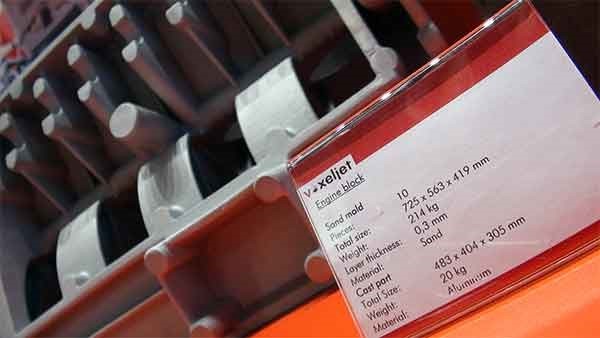At first glance, 3D printing is a broad, horizontal technology. But each industry will have its unique needs for 3D printing. A 3D printing manufacturer can turn a specialized technique into a large niche market.
The technologies used in 3D printing are varied. Stereolithography and curing of resins, digital light processing (DLP) and photopolymers, fused deposit modeling with thermoplastics, inkjet techniques using binder agents (binder jetting) or photopolymers (material jetting) and direct metal laser sintering are all types of additive manufacturing processes, but the techniques and the materials vary significantly, which make certain processes more appropriate for one application than another.
Germany’s voxeljet manufactures 3D printers that produce casting molds for industrial applications. voxeljet uses the binder-jetting method and prints using sand and plastics. Its printers can generate either plastic parts or sand parts in very large sizes, or many parts of a more modest size—the key point being the industrial target for casting production molds.
At Frankfurt’s Formnext 2015 trade show, voxeljet presented its range of printers, including the VX1000. With a price of $1 million, it is not surprising that the company also provides a 3D printing service using the technology. In fact, the parts-on-demand business is running ahead of the 3D printing system revenue for 2015, according to a company press release. And while Formnext in Frankfurt would be a local event for its German customers, voxeljet has gone international, now with service centers in the United States and the United Kingdom.
The VX1000 is not the largest printer in the voxeljet stable. That distinction goes to the VX4000, which is, according to the company, “the world’s biggest industrial 3D printer including the cohesive build space of 4,000 x 2,000 x 1,000 mm (158 x 79 x 39 in). The machine is very fast, easy to operate and permits the economical production of very large individual molds, many small-series components or a combination of the two.”
Read more at ENGINEERING.com


